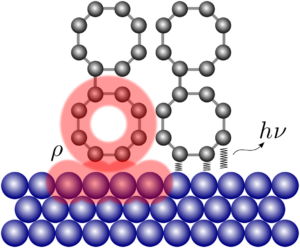Unified Density Functional Description of Bonding and Interactions at Inorganic/Organic Interfaces
Summary
The accuracy and efficiency of parameter-free density functional methods to describe chemical and physical phenomena in inorganic/organic interfaces has been shown in the first and second periods of the CRC.
The project focusses on interfaces between versatile organic building blocks and semiconducting as well as metallic substrates. We specifically aim at providing insight in interlink chemistry of the second organic layer and predicting new interfaces with interesting electronic properties based on the design principles revealed. Our quantitative energy-based analysis method is now broadly applicable to all kinds of interfaces and will guide our investigations. We use mainly density functional theory complemented by accurate wavefunction based methods.
Connection to experimental projects will be made through the analysis of spectroscopic quantities at the interfaces.
Project-related publications
- L. Pecher, R. Tonner
Deriving bonding concepts for molecules, surfaces, and solids with energy decomposition analysis for extended systems
WIREs Comput. Mol. Sci 9, e1401 (2019). - J.N. Luy, M. Molla, L. Pecher, R. Tonner
Efficient hierarchical models for reactivity of organic layers on semiconductor surfaces
J. Comput. Chem. 42, 827 (2021). - J.N. Luy, R. Tonner
Organic Functionalization at the Si(001) Dimer Vacancy Defect-Structure, Bonding, and Reactivity
J. Phys. Chem. C 125, 5635 (2021). - L. Pecher, R. Tonner
Computational analysis of the competitive bonding and reactivity pattern of a bifunctional cyclooctyne on Si(001)
Theor. Chem. Acc. 137, 48 (2018).


Prof. Dr. Ralf TONNER
Jakob Schramm, PhD-student
Hendrik Weiske, PhD-student
Former Contributors
Dr. Jan-Niclas Luy
Dr. Lisa Pecher
Dr. Mark Raupach
Dr. Nikolay Zaitsev






